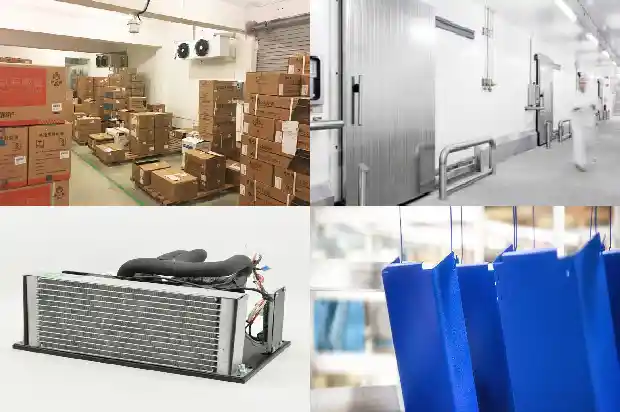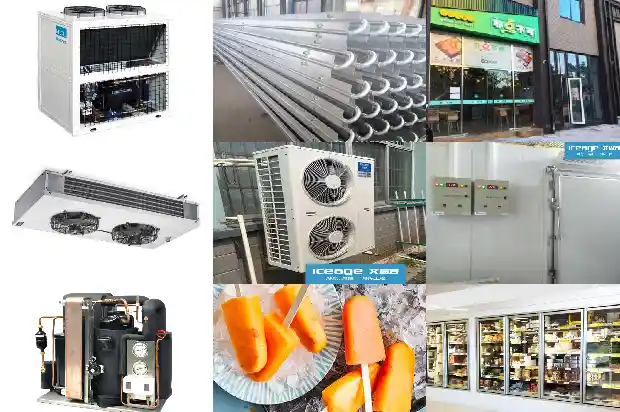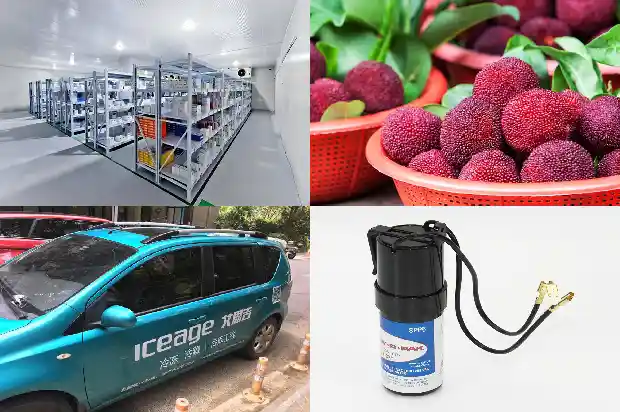What Causes the Indoor Unit of an Air - conditioner to Freeze? Here's the Answer~
2025-02-27
1. Insufficient Refrigerant
Due to reasons such as installation or long - term use, refrigerant leakage may occur. After the amount of refrigerant in the refrigeration system decreases, the evaporation pressure becomes too low, causing the evaporator to freeze.
The frozen part is usually at the front of the evaporator.
The solution is to first repair the leakage area and then add enough refrigerant, and the fault will be eliminated.
The frozen part is usually at the front of the evaporator.
The solution is to first repair the leakage area and then add enough refrigerant, and the fault will be eliminated.
2. Low Compressor Efficiency
- Compressor Failure: After long - term use, the compression efficiency of the compressor decreases, or the gas - distribution system of the compressor is damaged, resulting in too low pressure and causing the evaporator to freeze.
The frozen position is also at the front of the evaporator.
For the former case, adding some refrigerant may solve the problem. If the fault still exists, the compressor must be replaced.
3. Excessive Refrigerant
Some air - conditioners have their refrigerant re - injected due to reasons such as displacement or leakage. Improper operation may lead to an over - addition of refrigerant, causing excessive refrigerant to flow to the rear part of the evaporator and evaporate there, resulting in freezing.
This kind of ice usually forms at the rear part of the evaporator and around the compressor's suction pipe.
Releasing the excess refrigerant will eliminate the fault.
This kind of ice usually forms at the rear part of the evaporator and around the compressor's suction pipe.
Releasing the excess refrigerant will eliminate the fault.
4.

After an air - conditioner has been used for a period of time, dust in the air or microorganisms generated by the evaporator will accumulate on the evaporator, blocking the air circulation, reducing the heat exchange, and causing the evaporator temperature to be too low and freeze.
The frozen position is at the rear part of the evaporator.
After the ice melts, rinse the evaporator with water and brush it along the fins with a soft brush. Be careful not to wet the electrical parts.
The frozen position is at the rear part of the evaporator.
After the ice melts, rinse the evaporator with water and brush it along the fins with a soft brush. Be careful not to wet the electrical parts.

5. Too Low Temperature Setting
Some users set the temperature of the air - conditioner too low. The cooling capacity of the air - conditioner cannot keep up, and the room temperature cannot drop to the set temperature, so the air - conditioner runs for a long time. Or the shutdown time is very short, which can also cause the evaporator to freeze. In some cases, when the room temperature drops very low, it can also lead to the evaporator freezing due to overly low temperature.
This kind of ice usually starts to form from the lower part of the evaporator.
Simply setting the temperature higher can eliminate the fault.
This kind of ice usually starts to form from the lower part of the evaporator.
Simply setting the temperature higher can eliminate the fault.
6.

- Malfunction of Temperature Control: In a mechanical thermostat, the gas pressure in the temperature - sensing bulb changes with temperature, driving the movement of the thermostat contacts. Due to reasons such as contact adhesion or insufficient spring tension, the contacts remain closed, causing the air - conditioner to run continuously and resulting in freezing.
Replacing the thermostat will solve the problem. - Special Case: There are also special cases where the thermostat is not damaged, but the air - conditioner has a short shutdown time or does not stop. The temperature - sensing bulb is suspended in the middle of the evaporator about 2mm away from the fins by a U - shaped plastic bracket. Presumably, the manufacturer designed it this way to make the temperature - sensing bulb of the thermostat play a role in temperature lag, preventing the air - conditioner from starting frequently within a short time (within 3 minutes). In midsummer, the indoor temperature is high, and due to the limitations of the air - conditioner's own refrigeration, the thermostat can hardly reach the temperature - control break - point. The air - conditioner has a short shutdown time or even runs continuously, causing the evaporator to freeze. This kind of ice usually forms at the lower part of the evaporator.
In this case, the temperature - sensing bulb needs to be moved to the lower end of the evaporator and fixed tightly against the evaporator fins, and the fault will be eliminated.
7. Low Indoor Unit Air Volume
- Low Air Volume Caused by Fan Dirt: After the air - conditioner has been used for a period of time, some fan blades are covered with a lot of dirt, which affects the air supply and causes the evaporator to freeze.
Removing the dirt will solve the problem. - Low Air Volume Caused by Mechanical or Electrical Faults: Some fans have their rotational speed slowed down due to mechanical or electrical faults, resulting in low air volume and causing the evaporator to freeze. Mechanical reasons are mostly due to wear of bearings and bushings, increased resistance, and slowed - down rotation. Electrical faults are mostly due to capacitor charge - discharge failure or inter - turn short - circuit of the fan, resulting in slow rotation, and even the fan winding burning out and the motor not rotating.
For this kind of freezing phenomenon, the fan needs to be repaired or replaced according to the specific situation.
Related Articles
- Screw Compressor Units: Principles, Design and Selection - Essential Guide for Refrigeration Beginners
- Refrigeration Components of Refrigeration
- Basic Faults and Preventive Maintenance of Water - cooled Units
- Winter Approaches: How to Solve the Low High - pressure Issue of Air - cooled Condensing Units?
- What to Do if the Compressor of the 【Refrigerated and Frozen Display Cabinet】 Unit Fails to Start?
- Common Pressure Valves and Protection Devices in Refrigeration Units
- How to Troubleshoot and Repair High - pressure Protection of Air - cooled Units?
- Precautions for Commissioning of Screw Parallel Units
- Principles, Components and Heat Recovery of Modular Units
- Operation of Screw - type Water - cooled Chiller Units
- What to Do When a Refrigeration Unit Malfunctions?
- Common Faults and Solutions of Central Air - conditioning Chiller Units
- Causes and Prevention of "Primary Condensation" and "Secondary Condensation" in Fan - Coil Units
- Maintenance Methods for Refrigerant Leak in Air - conditioner Outdoor Unit
- Water Flow Control Technology for Small Air-cooled Hot and Cold Water Units
- The canned pump in the barrel pump unit
- Barrel pump unit of refrigeration system
- Precautions for the Hot Gas Bypass Valve of Refrigeration Units in Cold Storage
